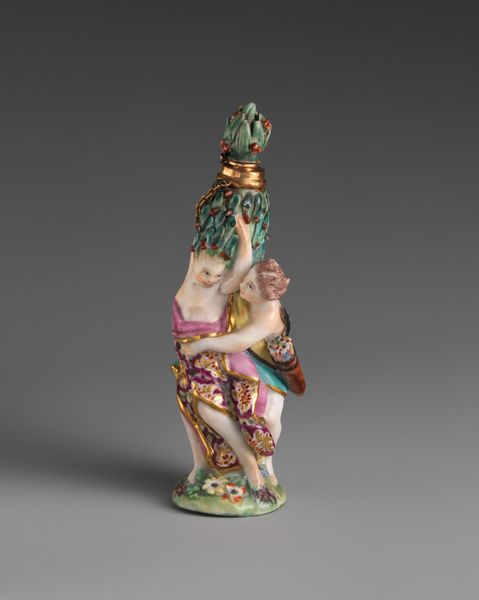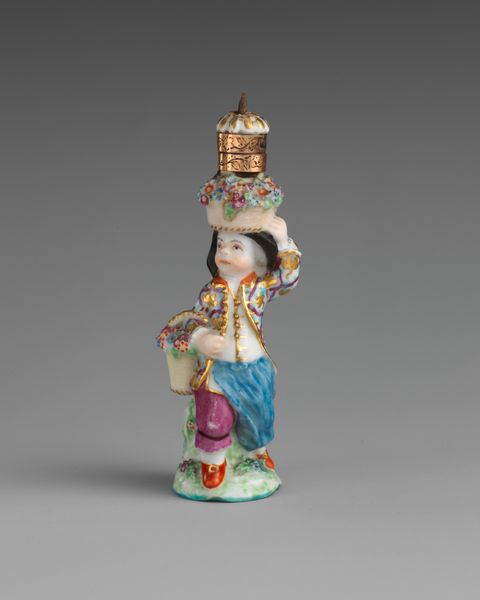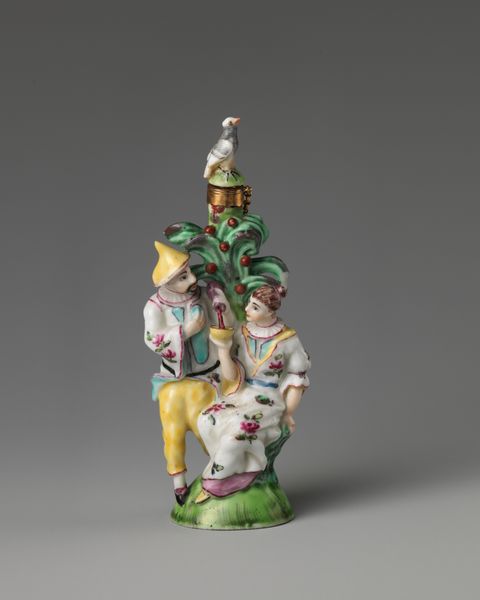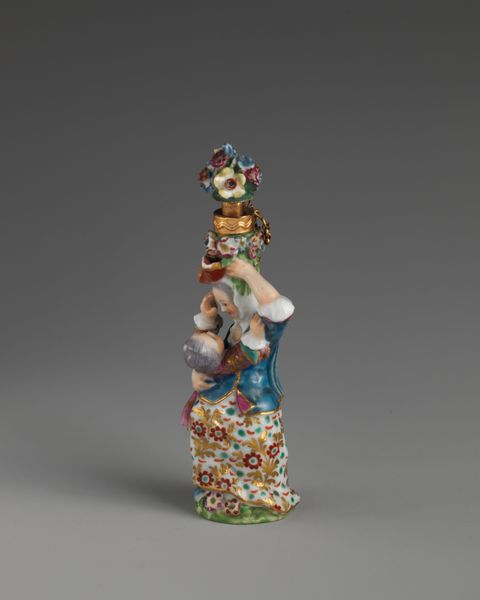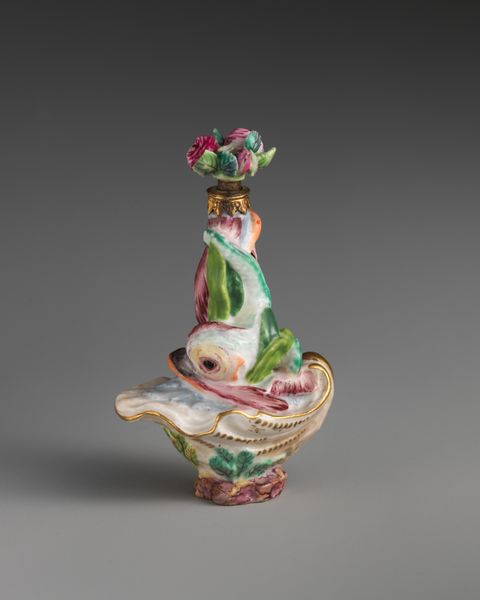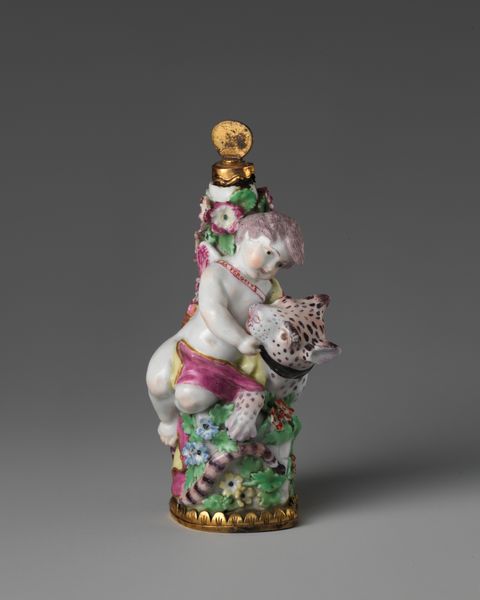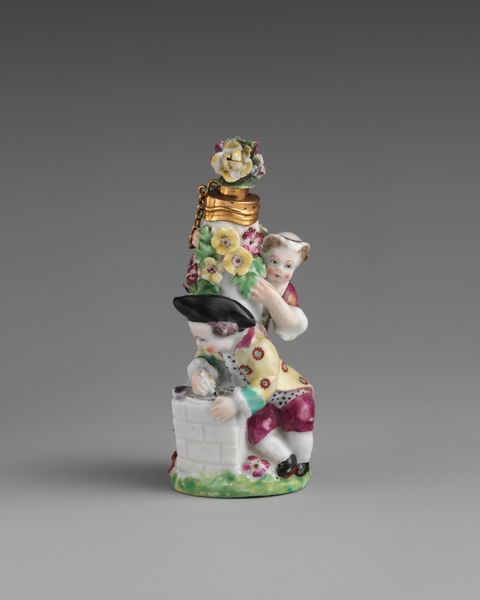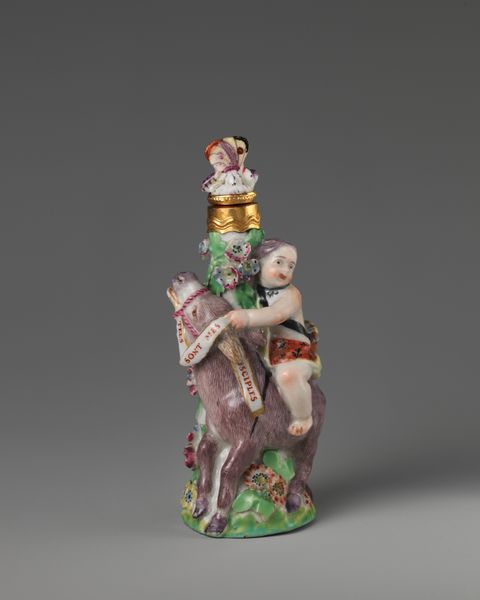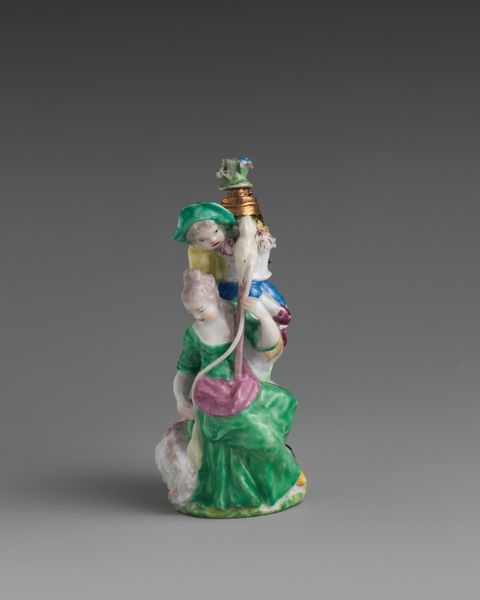
ceramic, porcelain, sculpture
#
animal
#
ceramic
#
porcelain
#
sculpture
#
decorative-art
#
rococo
Dimensions: Overall: 3 7/8 × 1 3/8 in. (9.8 × 3.5 cm)
Copyright: Public Domain
Curator: What strikes me immediately is the vibrancy; it feels both elegant and slightly whimsical. Editor: This is *Orpheus*, a porcelain sculpture crafted by the Chelsea Porcelain Manufactory between 1760 and 1770. We’re lucky to have it here at The Met. Examining its production through the lens of eighteenth-century European workshops and the patron class is particularly rewarding. Curator: Absolutely, but let’s consider how Orpheus is depicted here, right? Surrounded by animals, this isn't just a cute scene, but a manifestation of dominance. It embodies the ideal of enlightened human mastery over the natural world. It's really potent. Editor: Indeed, that control, and moreover, the control porcelain manufactories wielded over materials, labor and artistic design, reflects the power dynamics of the era. The Rococo style further amplifies the opulence valued within courtly society. Think about where such objects were displayed; the aristocracy showcased objects to display refinement and influence. Curator: But is that all there is to it? It raises questions for me. Orpheus and his connection to the wild...is it not possible that it presents ideas of queerness? The fluidity of myth is, I believe, still felt when witnessing art such as this. The tension here—civilized society set against nature, divine beauty within pain. I feel this. Editor: It's about reception, isn't it? Whether the work reflects intentional coding, its presence among these elite circles also says much. The circulation of artwork and their status are always in relation to the ruling factions and forces of those societies. Curator: Yet, regardless of how the ruling class consumed it, the image continues to inspire conversations regarding gender roles, social structure, power, and so forth, as we now see it from another vantage. Editor: It is intriguing to ponder how the interpretation of "Orpheus" might transform, evolve with audiences that confront history from their current standpoint. It urges reflection not just on artistry or the world in which they emerged but the ways museums have the responsibility to reframe perspectives today.
Comments
No comments
Be the first to comment and join the conversation on the ultimate creative platform.
